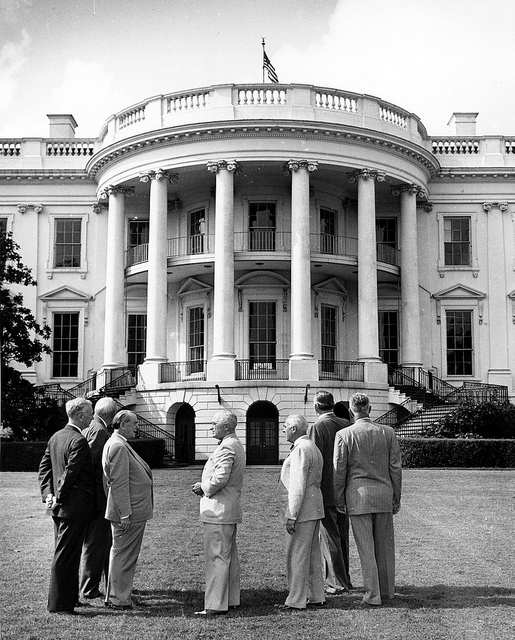 |
| Photo courtesy of Library of Congress. Accessed on Washingtonian Magazine's website on 13 Jan. 2016. |
Today, of course, the mansion is surrounded by a security gate, ...
... and President Truman added a balcony outside the upper level.
 |
| Source: http://carlanthonyonline.com/2013/09/22/first-family-photos-on-the-truman-balcony-the-myth-behind-it/, accessed 13 Jan. 2016 |
Classroom Connection: These materials, and other photographs and maps that you could find, would be a nice way to introduce the impact that threats (external and internal) have had on the lives of our most public Americans. Ask your students to address this question: How did the president's formal residence reflect the growing power of the office and the growing safety risk to people who lived and worked there? Some useful starting points of reference could be:
- the large public crowds that came through the White House during the inaugurations of Andrew Jackson and William Henry Harrison
- closing off the White House grounds during World War II
- the assassination attempt on President Truman across the street from the White House
- placing concrete barriers outside the perimeter after terrorist attacks in the 1980s
- the increasingly stricter use of perimeter fencing after 9/11
Students could also compare the increasing security at the White House with corresponding security measures used to protect employees and visitors in other public buildings.
No comments:
Post a Comment